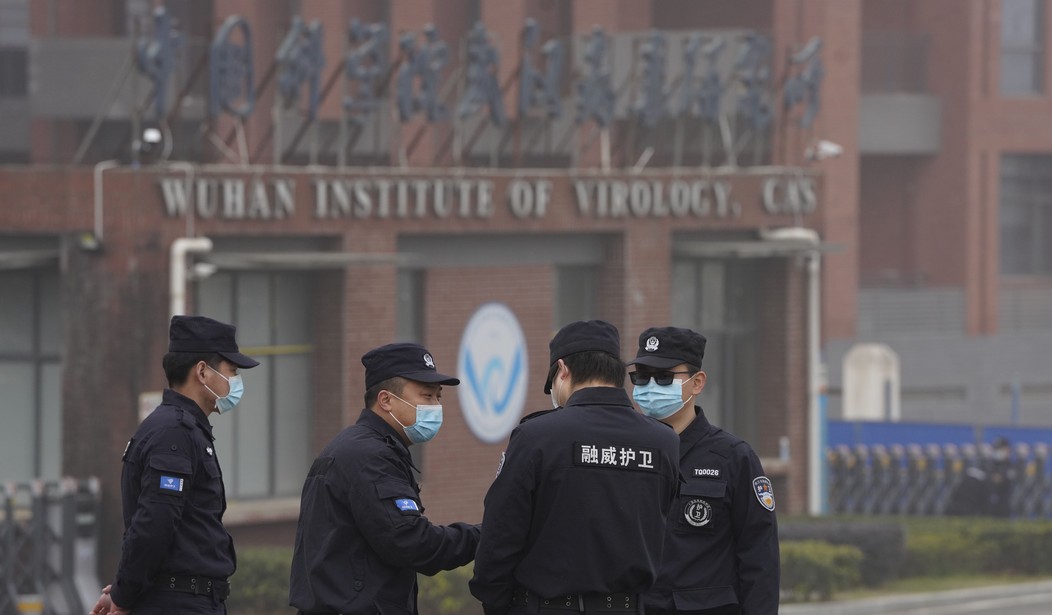 |
The hunt for the origins of the SARS-CoV-2 coronavirus, AKA COVID-19, has become a government-wide investigation. The intelligence community, public health agencies, scientific research departments, and colleges and university labs are all trying to unravel the mystery of how a bat disease made the jump to humans.
The Chinese Communists have an answer. They claim the pandemic originated in America.
A Chinese government-sponsored propaganda paper states, "The US should cease from shifting blame and evading responsibility, stop finding external excuses for its internal malaise, and genuinely reflect on and overhaul its public health policies. The US cannot continue to turn a deaf ear to the numerous questions over its conduct."
The Chinese claim that COVID-19 was present in the U.S. long before it appeared in China. Because the Chinese government destroyed most of the records that would have helped unravel the COVID origin mystery, they can say pretty much anything they wish and pretend it's true.
There are two dominant theories about the origin of COVID-19. The first is the "natural" or zoonotic origins theory. Many scientists love this theory because, in the history of human diseases, almost all viruses have infected humans this way, moving from one animal to another and then infecting people. Until evidence is found that points to another means of transmission, many scientists will cling to the natural origins theory.
The lab leak theory has many variations but the major elements all relate to the fact that the Wuhan Institute of Virology was cited numerous times for safety violations, and a leak involving some deadly pathogen may have been inevitable. It opened in 2018 and was China's first biosafety level 4 laboratory.
Any evidence that the COVID-19 coronavirus leaked from Wuhan has long since been scrubbed by the Chinese Communists. What we have are hints, elliptical references, and other circumstantial evidence that point to the Wuhan lab as the source, but unfortunately, there is nothing definitive.
Most serious researchers and scientists have traced the origins of COVID-19 to Wuhan, where it first appeared (according to public records) near a "wet market" that sold live animals for food. The Wuhan lab sits less than a mile from that wet market, and some Wuhan lab workers fell ill in 2019. Some researchers claim that the workers fell ill after eating infected meat. Since the records, including autopsy results of workers who died, have not been handed over by the Chinese government, we don't know exactly what they died of. --->READ MORE HERENew Orleans got $388 million in federal pandemic aid. Was that money well spent?
New Orleans Mayor LaToya Cantrell speaks at a Jan. 19. 2021, commemoration service for those who died of COVID-19 in New Orleans. (City of New Orleans livestream)
NEW ORLEANS – When Congress passed the $1.9 trillion American Rescue Plan Act (ARPA) in March 2021, it allocated $350 billion in assistance to state and local governments – providing the largest infusion of cash to local governments since the start of the COVID-19 pandemic. For New Orleans, that money represented a desperately needed lifeline.
The city had been hit particularly hard by COVID-19. It was an early hotspot for the virus. And Black residents, who comprise about 60% of the city’s population, were disproportionately impacted, accounting for more than 75% of COVID deaths in the first few months of the pandemic. As New Orleans went into lockdown, the city watched its economy grind to a halt. Festivals were canceled. Hotels emptied out. Restaurants closed their dining rooms. Thousands were laid off.
For the city government, this represented a multi-pronged disaster: With tourism all but halted, the city was receiving dramatically less from sales taxes than usual, straining its finances. At the same time, the needs of its citizenry were at an all-time high. The city took out a certificate of indebtedness, which basically provided a $100 million line of credit, and partially furloughed its entire workforce.
But shortly after Congress passed ARPA, city leadership expressed cautious optimism.
“This is by no means a silver bullet or a panacea, but this funding will literally buy us time,” Mayor LaToya Cantrell said in a March 2021 press release.
New Orleans would go on to receive nearly $388 million in ARPA funds – among the largest allocations in the country for a city of its size. The money was directly given to local governments and came with few strings attached. The recipient governments had to obligate all of the funding by the end of 2024 and spend it by the end of 2026.
The Cantrell administration would use that money not only to plug substantial holes in the city’s revenues and build up its financial reserves, but also to fund a variety of initiatives across the city – from public safety to health to economic mobility.
Cantrell will leave City Hall next year after nearly eight years as mayor. And a big part of her legacy will be about how she handled the pandemic. Not just the lockdown months, the mask mandates and the various phases of reopening, but the huge opportunity that this federal windfall represented for the city, and whether she took it.
“ARPA funds were absolutely transformational for New Orleans,” a spokesperson for the city of New Orleans said in an email, pointing to a slew of programs the city funded, from catch basin cleaning to workforce development to technological upgrades.
But not everyone agrees. --->READ MORE HEREFollow links below to relevant/related stories and resources:
Lessons from COVID-19 paved a ‘roadmap’ for future disease responses, officials say
Blue Bus expects to restore routes limited by onset of COVID-19
USA TODAY: Coronavirus Updates
WSJ: Coronavirus Live Updates
YAHOO NEWS: Coronavirus Live Updates
NEW YORK POST: Coronavirus The Latest
If you like what you see, please "Like" and/or Follow us on FACEBOOK here, GETTR here, and TWITTER here.


No comments:
Post a Comment